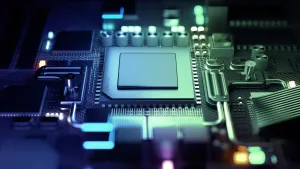
Trends, tactics, teams, and technology to consider for innovative product development!
The world of electronics and modern technology is constantly evolving, and organizations need experts with mastery over software development to overcome the ever-growing and seemingly impossible challenges. Among the range of products, services, and industries, the complexities involved in innovative product design and advanced embedded software development that combine semiconductor technologies and hardware acceleration modules are paramount.
Compared to standard IT development that requires high-level business logic and data management, embedded systems development calls for the integration of physical hardware with the execution of user-defined low-level tasks to achieve the desired performance.
This article aims to showcase the challenges and issues of electronic product design and embedded systems in connected devices and how the right partnership can help you innovate.
The emergence of the Internet of Things (IoT) brings us connected devices that are an integral part of the physical world. Reports predict that the global market share for embedded software solutions would touch $267.3 billion by 2025, and the codebase would double every two years. Demand is the primary factor for the rise of connected devices because embedded systems are fundamental to the everyday activities of individuals and companies.
Especially with the “Internet of Things” (IoT), embedded system design has become vital and ubiquitous, from calculators to cars to wearable tech and medical devices. Given the significant consumer impact of IoT and the massive economic potential, embedded software development is now indispensable in electronic product design.
However, transforming standalone devices into intelligent and networked versions tailored for the respective market segments is challenging for some industries. The reason is the lack of top talent or expertise to satisfy the increasing demand. Custom software product development using embedded systems has seen rapid changes with AI and IoT. Speeding things up at a lightning pace can prove difficult for developers as they struggle to keep up with available technologies, especially in the IoT segment.
Outsourcing software engineering can then be an attractive and feasible alternative. An experienced team with the right skills and high standards can ramp up quickly and deliver quality results. With embedded software engineering outsourcing, companies delegate the generic IoT development tasks to specialists with in-depth knowledge of these critical operations, while their employees can work on core product strategy and business-logic related development. This way, companies minimize the risk of developing products with technology that is new to their business like; machine learning, artificial intelligence, and other software-related fields.
Safety and security are burning issues in the digital world, primarily in embedded software development. As online threats grow exponentially, modern interconnected and IoT devices are vulnerable to hacking attempts and pressing security concerns like malware attacks, financial losses, data corruption, confidential information leaks, and intellectual property infringement.
An end-to-end IoT system requires an exceptionally wide range of technologies and development skills. From embedded software to web and mobile application development to cloud backend development, including analytics and machine learning.
To meet the security requirements that come with IoT connectivity, companies need to hire developers with these different skills (embedded, cloud, web or mobile) to write safe and secure IoT systems. A complex task considering the shortage of skilled labor in the world today.
Partnering with experts that are familiar with IoT and excel in devices, gateways and cloud development can be very beneficial to innovative companies, providing faster turnaround times and cost savings, while making products safe and quickly available to potential markets.
With connected devices, where new product development processes and hardware design combine, complexity increases. When you have embedded systems with software packages that were never used together, the development and testing teams spend vast amounts of time debugging, which is bound to be more than the average – 40% of the SDLC (Software Development Life Cycle.)
Embedded systems are characterized by their highly regulated nature, have strict requirements, and are associated with critical environments and lifesaving functionalities. In the automotive industry for example, safety and security procedures must be implemented to comply with standards, such as ISO 26262.
However, security and safety testing are complicated as the compliance certification cannot happen until every design aspect (embedded software, hardware design and application) has met all required safety documentation requirements. It requires a complex iterative process of “test & fix,” where issues are identified after each step in embedded software development, necessitating specialized know-how and domain expertise.
One of the leading security concerns of any electronic product design with embedded systems is that the devices can quickly get outdated. So, regular oversight by an embedded software engineering firm can ensure that the client’s requirements are captured according to strict compliance standards.
Continuous collaboration between your FPGA design services partner and the core product design and development team makes it possible to write custom code or integrate existing components/modules into a cohesive solution just as easily for IoT systems as for standalone devices.
Since embedded system design varies significantly from standard off-the-shelf solutions, depending on project scope and industry sector, manufacturers can develop small patches and substantial firmware updates to be deployed remotely without the user’s intervention.
Besides, tackling the updates and installations on multiple virtual machines in the IoT environment can also address the time-to-market challenges.
Most of the apps launched today, according to Gartner, are from companies younger than three years, with teams that lack adequate hands-on experience in embedded software development, and specifically, the IoT environment.
Compatible devices connected through various routes like Wi-Fi, Ethernet, Bluetooth, Edge, LoRa, and other wireless channels have a 98% cyber threat level, per the IoT Threat Report from Palo Alto Networks for 2020.
A good knowledge of existing connectivity is needed to properly choose best suitable solution for a given device in term of bandwidth usage, latency, and power consumption.
While integrity is a security issue here, compatibility is in question because of the pressure connectivity puts on the adaptability of apps via a simple user interface across the entire ecosystem. Moreover, each available channel relies on a different technology stack, requiring the developers to have ample expertise in them and the protocols or a combination of protocols to use, such as UDP, COAP, TLS, TCP, IP, and MQTT.
Pre-engineered software stacks may partially address this complexity, but clients, users, and stakeholders should easily understand the deliverables. This issue can be resolved with software engineering outsourcing, where project management documentation is available in all SW/FPGA/ASIC IP development stages.
Working with a firm that provides custom software development will allow you to channel your efforts on core product design, R&D, testing, and experimentation. In the changing global scenario, it isn’t easy to attract and retain a skilled workforce for various reasons, which is why agile talent is the way forward.
Whether you are launching a new product, catering to existing customers, or expanding into specific verticals, tying up with an embedded software development partner is beneficial. It also makes perfect sense in the long-term as you can scale up or down per your requirements.
At Orthogone, we deliver high-quality embedded systems solutions encompassing various industries like telecom, aerospace & defense, automotive, security & surveillance, and healthcare sectors.
As the leaders in the field, we provide our clients with outstanding electronics product design services by handling the toughest engineering challenges.
Contact us now to learn how to innovate using our resources.





Connect with our team of experts right in your inbox.
© Orthogone - All rights reserved 2023